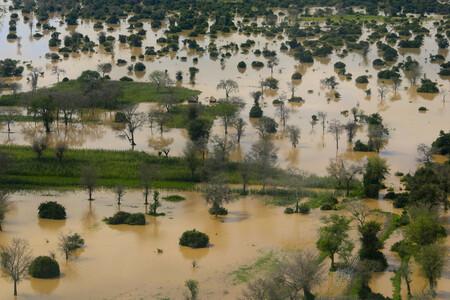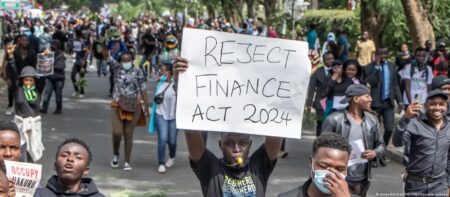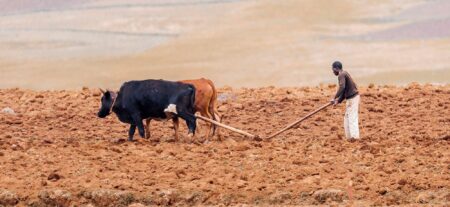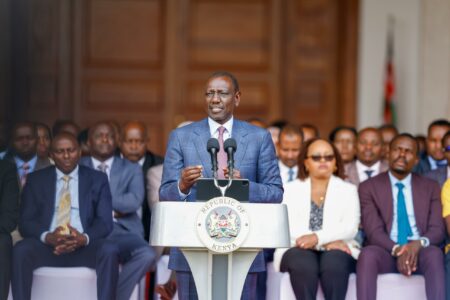- About 22 districts across Zambia are underwater due to climate change-induced flooding caused by above-average rains according to CARE Zambia
- The humanitarian organisation reports that over 70 districts in Zambia are at a high risk of flooding even as the rains continue to fall, and rivers burst their banks.
- The climate crisis has directly affected at least 1.5 million people – including an estimated 821,000 children.
About 22 districts across Zambia are underwater due to climate change-induced flooding caused by above-average rains according to CARE International.
The firm reports that over 70 districts in Zambia are at a high risk of flooding even as the rains continue to fall, and rivers burst their banks.
In six districts where CARE works, there has been continuous rains that have led to flash floods. Hundreds of hectares of planted fields and grazing lands are underwater. Homes have been submerged as roads and bridges have been washed away, cutting off access by road to the affected communities. At the same time, hundreds of children are unable to get to school due to rising flood waters.
CARE International Zambia Country Director Chikwe Mbweeda says the climate crisis has directly affected at least 1.5 million people – including an estimated 821,000 children.
“We are particularly concerned about the impact this will have on women and girls who end up being affected the most. The current situation in Zambia will push the country back despite some of the strides that had been made. We need all the backing we can get to continue supporting those affected by the floods to get back on their feet,” Mbweeda explained.
At the same time, the threat of waterborne diseases is looming as a cholera outbreak has already claimed the life of one person and several other cases are being investigated by the Ministry of Health in the Eastern Province. There has also been a resurgence of COVID-19 cases across the country.
CARE Zambia has pre-positioned non-food items and cash in three districts in the Southern Province to support more than 2,700 individuals to help them address the immediate negative impacts of the floods.
“We continue to coordinate with other NGOs and the humanitarian cluster system. In addition, CARE is actively coordinating with the government as well as local and International NGOs to support ongoing relief efforts,” Mbweeda added.
Unreported crises
Zambia is one of the most underreported crises in the world. With more than half of the population living on less than $1.90 a day, poverty has negatively impacted the country even before the onset of the triple threat.
The malnutrition rate is high, with 48% of the people unable to meet their daily nutrition needs and one-third of the children being stunted, as reported by the World Food Program. The new crisis occasioned by the floods risks being disastrous for the advancement of the country.
A recent report by the Zambia Disaster Management and Mitigation Unit (DMMU) projected that 78 districts in all the 10 provinces in Zambia are at a high risk of flooding even as the rains continue to fall, and rivers burst their banks.
“To immediately address this disaster, we need US$33 million to reach the more than 171,200 people affected across the districts touched by the floods. The primary focus will be relocating displaced households to temporary camps being set up and provision of foodstuffs and non-food items in the affected districts. Another US$8.5 million will be required for post-flooding and disaster recovery,” said Gabriel Pollen DMMU National Coordinator.
The country is also facing an economic crisis after it defaulted on its foreign debt in 2020. The economic woes are blamed on years of mismanagement and corruption, which left the country with unsustainable levels of debt.
In September 2022, The International Monetary Fund (IMF) approved a $1.3bn (£1.1bn) bail out loan to Zambia following months of negotiations between Lusaka and Zambia’s main creditors, which include France, the UK and China. Nearly half of the country’s debt payments are to western private lenders.
“Zambia is dealing with the legacy of years of economic mismanagement, with an especially inefficient public investment drive. Growth has been too low to reduce rates of poverty, inequality, and malnutrition that are among the highest in the world. Zambia is in debt distress and needs a deep and comprehensive debt treatment to place public debt on a sustainable path,” the IMF said in a statement.











